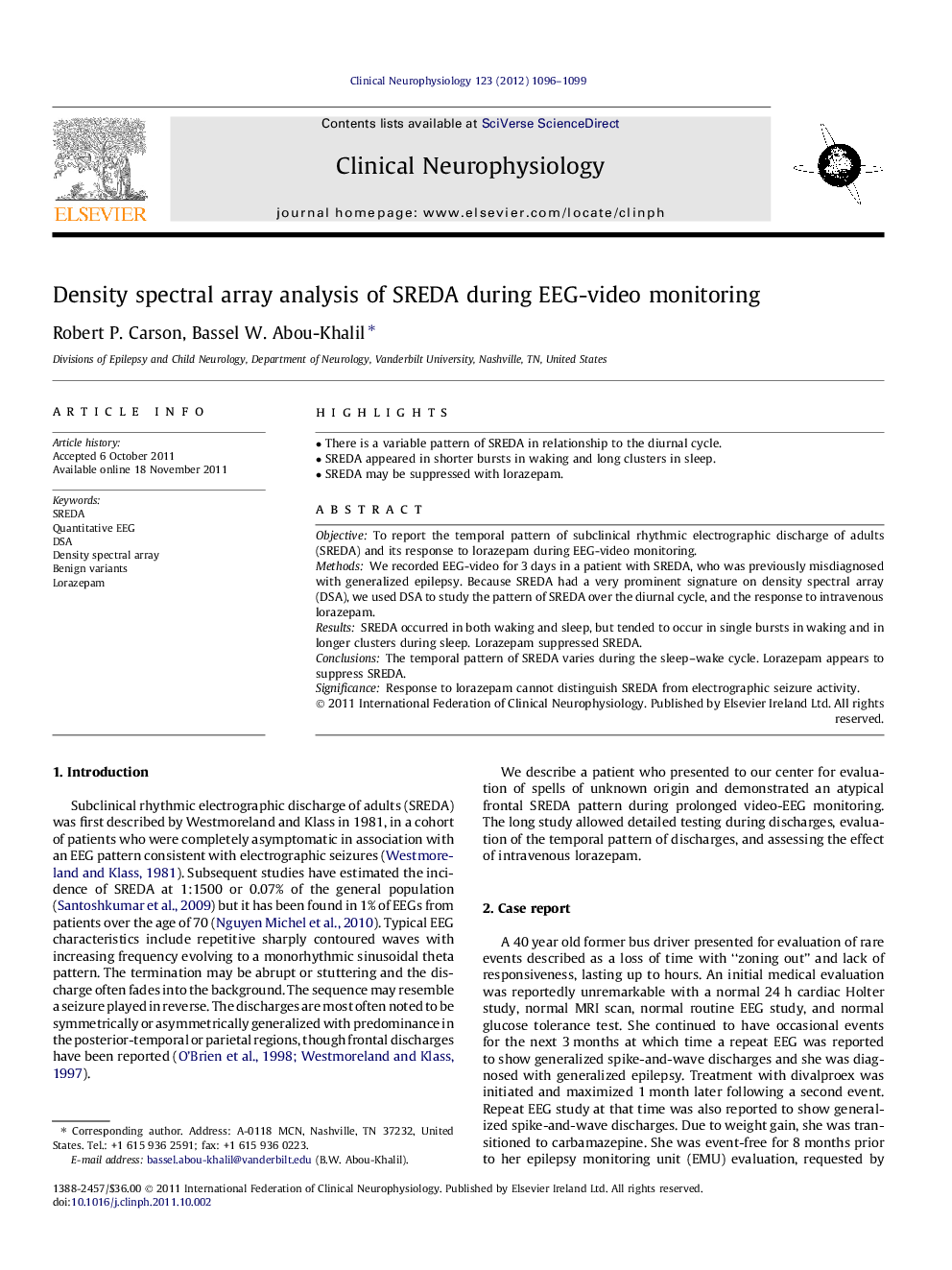| Article ID | Journal | Published Year | Pages | File Type |
|---|---|---|---|---|
| 3045010 | Clinical Neurophysiology | 2012 | 4 Pages |
ObjectiveTo report the temporal pattern of subclinical rhythmic electrographic discharge of adults (SREDA) and its response to lorazepam during EEG-video monitoring.MethodsWe recorded EEG-video for 3 days in a patient with SREDA, who was previously misdiagnosed with generalized epilepsy. Because SREDA had a very prominent signature on density spectral array (DSA), we used DSA to study the pattern of SREDA over the diurnal cycle, and the response to intravenous lorazepam.ResultsSREDA occurred in both waking and sleep, but tended to occur in single bursts in waking and in longer clusters during sleep. Lorazepam suppressed SREDA.ConclusionsThe temporal pattern of SREDA varies during the sleep–wake cycle. Lorazepam appears to suppress SREDA.SignificanceResponse to lorazepam cannot distinguish SREDA from electrographic seizure activity.
